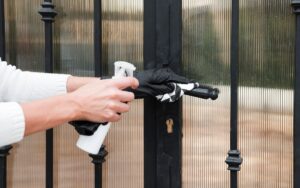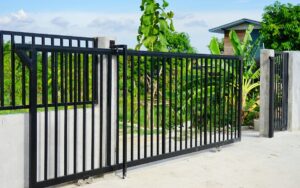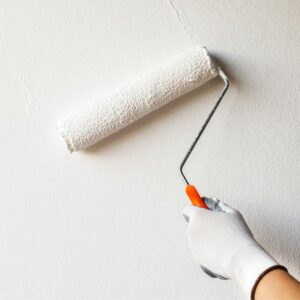The Ultimate Guide to Rust-Proofing Your Metal Gates & Grills in a Coastal City
Coastal air is hard on metal. Salt, humidity, and frequent wetting wear down protective layers and invite corrosion. This blog explains what you are likely to face, why it happens faster near the sea, and how to protect your gates and grills with steps you can follow.
Let’s Begin
Living by the sea brings a calm rhythm to life – the sound of waves, the cool breeze, and the freshness of salt air. Yet sometimes the same bliss takes away the peace. If you live in a coastal city, your gates and grills are constantly exposed to salt-laden moisture that speeds up rust and weakens the surface.
This blog explains why metal corrodes faster near the coast, what visible signs to watch for, and how to protect and maintain your gates so they last for many years. Each section is written to help homeowners, builders, and maintenance teams plan absolute, lasting protection.

What You Might Face Near The Coast
The first signs of corrosion are often minor but persistent. Within a season or two, you might notice:
- Reddish Streaks At Joints: Rust forms quickly where moisture collects, especially around welds and fasteners.
- Blistering Paint or Bubbles: Salt and moisture lift paint away from the surface, forming raised blisters.
- Frozen Hinges And Latches: Rust works into moving parts, making them stiff and squeaky.
- Pitting on Flat Bars and Rails: Small pits appear where water or dew sits overnight.
- White Deposits On Galvanised Metal: Salt reacts with zinc, leaving chalky marks that dull the surface.
These problems are not only cosmetic. If left untreated, rust can spread beneath the coating and damage the gate’s structure.
Why Corrosion Accelerates In Coastal Air
Coastal environments combine three factors that make corrosion thrive—salt, humidity, and temperature variation.
- Salt Spray: Sea air carries fine droplets rich in chloride ions. These attack the thin protective film on steel, starting corrosion even without visible water.
- Constant Humidity: The air rarely dries completely. Damp surfaces allow oxygen and water to stay in contact with the metal for longer periods.
- Condensation Cycles: Metal surfaces heat during the day and cool quickly at night, forming dew that leaves behind concentrated salt crystals.
- Design Traps: Sharp corners, crevices, and hollow sections collect moisture, giving rust the perfect foothold.
Together, these elements make the coastal belt one of the toughest places for metal maintenance.
Choosing The Right Protection Level
Not every gate needs complete restoration. The method depends on how much rust you can already see.
1. Preventive Care For New Or Sound Metal
If your gates are new or freshly painted, start protection early.
- Rinse surfaces regularly with fresh water to remove salt.
- Lightly sand glossy paint to improve adhesion before recoating.
- Apply one coat of anti-corrosive primer and one or two exterior topcoats.
- Pay special attention to welds, hinges, and corners—these areas fail first.
2. Repairing Light Rust Or Local Damage
Where rust spots or peeling paint have started but not spread deeply:
- Scrape away all loose paint and rust until only firm metal remains.
- Smooth the edges between painted and bare areas.
- Use a rust converter if any tight rust remains in small pits.
- Prime the repaired areas first, then apply a full topcoat over the entire surface for uniform colour and protection.
3. Full Restoration For Severe Rust
If large sections are flaking or heavily pitted:
- Clean to bare, bright metal by wire brushing or power sanding.
- Apply two generous coats of primer and two topcoats for thickness.
- Replace weak hinges, fasteners, and severely rusted components.
- Inspect hollow members for internal rust—add drainage holes if needed.
The goal is to build a continuous, sealed barrier between the metal and the moist air.
Tools And Basic Materials
Before beginning, gather what you need. Preparation is half the job.
- Wire brush or sanding tools for rust removal
- Mild detergent and clean rags for washing
- Degreaser or mineral spirits
- Abrasive paper (80–120 grit)
- Primer and exterior-grade paint suitable for metal
- Small brushes for detailed work
- Gloves, mask, and eye protection
Having all materials ready helps you finish the job within the same day—important in humid coastal climates where clean metal re-rusts quickly.

Step-By-Step Surface Preparation
- Wash Off Salts: Begin by rinsing the gate thoroughly with fresh water. Add mild detergent if grime or oil is present. Allow it to dry completely.
- Remove Rust And Loose Paint: Scrape, sand, or wire-brush until only clean, firm metal remains. Focus on corners and joints.
- Feather The Edges: Smooth the transition between bare and painted sections so new coats blend evenly.
- Degrease the Surface: Wipe with a clean cloth dipped in degreaser to remove oil and dust.
- Treat Remaining Rust: Apply a rust converter on any tiny spots you cannot fully remove. Let it react and dry as directed.
- Prime Immediately: Do not delay. Bare steel begins to rust within an hour in salty air.
A careful preparation stage ensures the coating adheres strongly and lasts through many seasons.
Applying Protective Coats
The strength of any protective system lies in film thickness and coverage. Thin or patchy coats fail quickly.
- Start With A Stripe Coat: Use a small brush to coat welds, edges, and bolts before the first full layer.
- Apply Two Primer Coats: Allow the first to dry completely before adding the second. This creates a dense base that resists moisture.
- Finish With Two Topcoats: The first topcoat seals the primer; the second provides UV and weather protection. Keep strokes even and avoid over-brushing.
- Mind The Weather: Never paint in direct sunlight, during rain, or on damp metal. The best time is late afternoon or early evening when the humidity is moderate.
When done properly, these layers form a strong, flexible shell that shields the metal from salt and water.
Details That Fail First
Even a good coating can fail at design weak points. Keep an eye on:
- Hinges and Latches: They collect grime and hold moisture. Clean them regularly and recoat when dull.
- Fasteners and Screws: Replace rusted pieces with stainless or galvanised hardware.
- Sharp Edges: File lightly to remove burrs so the paint wraps smoothly.
- Hollow Frames: Add small drain holes at the lowest points to release trapped water.
Attention to small details prevents costly repairs later.
Maintenance Schedule
Consistent maintenance is simpler and cheaper than full repainting.
- Monthly: Rinse gates with fresh water to remove salt buildup.
- Quarterly: Wash with detergent, inspect for chips, and touch up exposed spots immediately.
- Yearly: Lightly sand and apply a thin refresher coat on sun-facing areas.
If you follow this pattern, a well-prepared metal surface can last for several years before needing major work.
Common Mistakes To Avoid
- Painting over dust, salt, or oil without cleaning properly
- Skipping the primer layer
- Applying coats too thin or too soon
- Using interior-grade enamel outdoors
- Ignoring rust spots until they spread
Every skipped step shortens the life of your paintwork.
We Give Care And Lasting Protection
At MRF Vapocure Paints, we believe every surface deserves care that lasts. From the toughest metal coatings to elegant wall finishes, our paints are created to protect, preserve, and perform in every climate.
Browse from our wide range of products, from special coatings for extreme conditions to over 18,000 shades that bring life and character to your spaces. Each formulation is built with the same purpose: to give lasting protection and dependable beauty, season after season.
When you choose MRF Paints, you choose strength, craftsmanship, and the confidence that every surface you paint is cared for and made to endure.
Summing Up
Rust is a constant challenge in coastal cities, but it can be controlled with care and consistency. Most corrosion starts small—at a scratch, a bolt, or a corner that went unnoticed. By cleaning regularly, keeping the surface dry, and maintaining a proper primer and paint layer, you stop rust before it begins.
Think of protection as an ongoing habit rather than a single task. A few hours of maintenance each season can extend the structural life of your gate or grill by years and preserve its appearance. Whether you handle it yourself or call in professionals for a full restoration, a thoughtful routine ensures your metalwork stands strong against salt, sun, and time.
FAQs
1. Why Does Rust Return So Quickly Near The Sea?
Salt particles attract moisture and create a thin film of water on metal surfaces. This keeps the rusting reaction active even when the weather feels dry.
2. Can I Skip The Primer If The Metal Looks Clean?
No. Primer is the layer that bonds to the metal and blocks oxygen. Without it, even high-quality topcoats will fail.
3. Is It Safe To Paint During Humid Weather?
Humidity above 85% prevents proper drying. Wait for a dry spell or use a covered area with ventilation.
4. Can Galvanised Metal Rust Too?
Yes. Galvanised steel has a zinc coating, but it can still corrode once that layer is scratched or worn. Regular cleaning and recoating are important.



